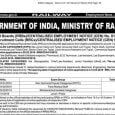
A recent study conducA recent study conducted by the Vidhi Centre for Legal Policy has suggested that the recruitment process of lower Court Judges is not happening in a regular and timely manner in a number of States.
The report, titled ‘Ranking Lower Court Appointments’, further concludes that even if States do complete a recruitment cycle, many are unable to fill the total number of advertised vacancies.
It, however, clarifies that while its findings “may signal inefficiencies in appointments processes”, they are limited in two ways. It explains, “First, for many states, we have been able to secure information for only one recruitment cycle which makes it difficult to draw conclusion on the overall performance of the state. Second, systemic reasons for delay such as pending litigation often lie beyond the control of the state but have the effect of delaying the entire process. Additional factors such as poor quality of legal education and poor incentive structures contribute to the lack of an adequate pool of meritorious candidates for such examinations.”
Rankings
The report cites the Supreme Court ruling in the case of Malik Mazhar Sultan & Anr. v. U.P. Public Service Commission & Ors., (2007) 2 SCALE 159, wherein it had been ruled that a two-tier recruitment process should take 153 days whereas a three-tier examination procedure should take around 273 days. A two-tier process consists of a written exam and an interview, whereas a three-tier system comprises of a preliminary exam followed by a written test and an interview. The study reveals that this timeline isn’t followed in most States.
As per the report, the average recruitment cycle was 326.27 days for a three-tier recruitment process to appoint Civil Judges (Junior Division). This was calculated after studying data from 20 States and calculating average for 18 States over a 10 year period. The data revealed that Arunachal Pradesh, Odisha and Punjab were the top-ranking states while Jammu & Kashmir (J&K), Manipur and Delhi were ranked the lowest. The delay with J&K and Delhi was, however, caused by litigation challenging their recruitment processes.
The process for District Judges (Direct Recruitment) was not very different. It states that seven States with a two-tier recruitment system took an average of 196.28 days to complete one cycle. Ten States that followed a three-tier system took an average of 335.9 days, it said. Further, amongst these, Tamil Nadu and West Bengal were ranked the highest while Assam and Bihar were ranked the lowest.
Finally, however, the report suggests that its findings be taken with a pinch of salt and states, “This ranking is an attempt to make sense of publicly available data for a relative comparison amongst states. Indeed, judicial recruitment is influenced by factors that are often beyond the state’s control. Further, all data on lower judicial recruitment may not be available online. Due to these reasons, the study does not conclude that lower-ranking states are necessarily poor-performing. It is, at best, a comparative indicator of the recruitment processes being undertaken in different states.”
Two metrics
The ranking has been assigned on two metrics:
- Average time taken to complete one recruitment cycle; and
- Percentage of vacancies potentially filled.
To calculate the first metric, the report takes the start date as the date of the advertisement calling for applicants and the end date as the date when the final select list of candidates was announced. This metric measures the ‘timeliness’ of the selection process.
To calculate the second metric, the report uses the number of vacancies mentioned in the advertisement notification and the number of candidates who qualified in the final select list/merit list. This metric measures the success rate of these exams in filling the advertised vacancies through the appointment process.
[“Source-livelaw”]




